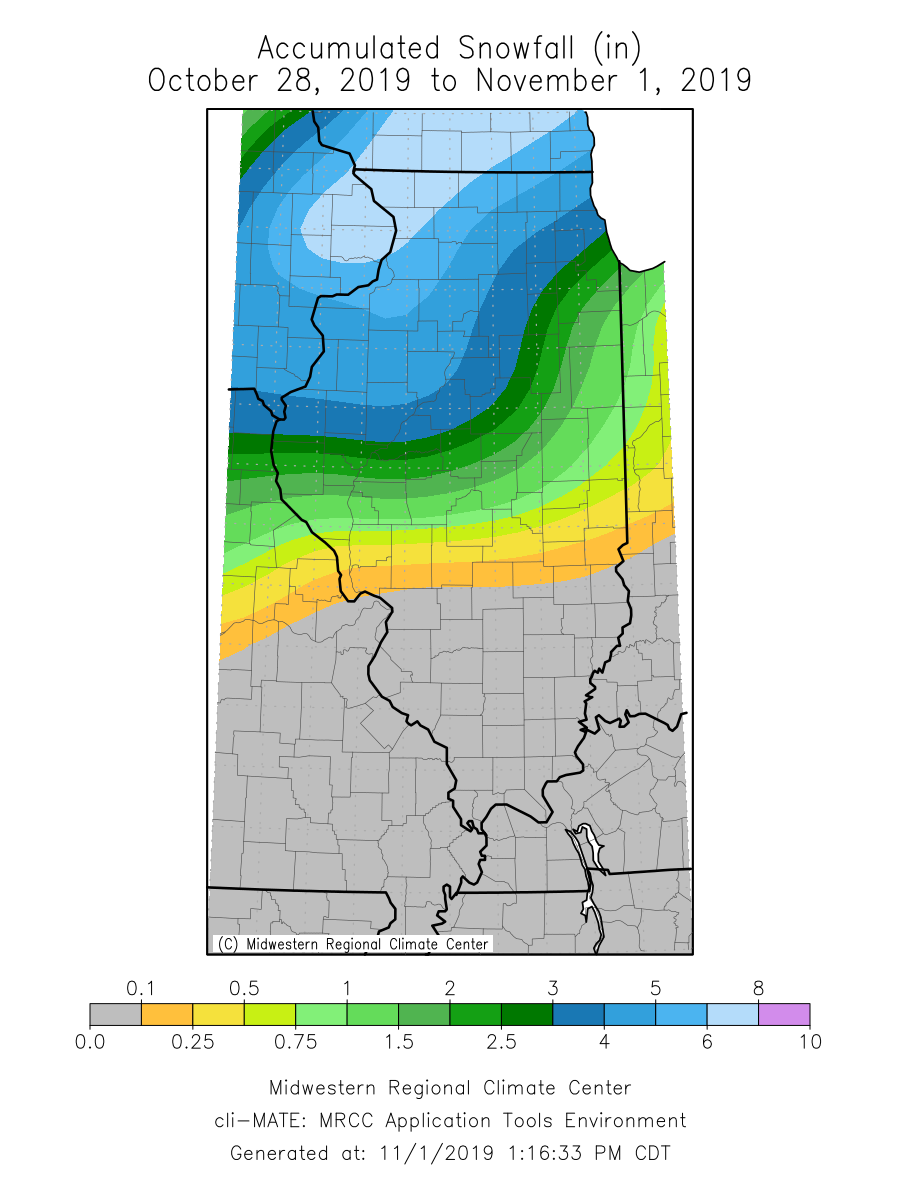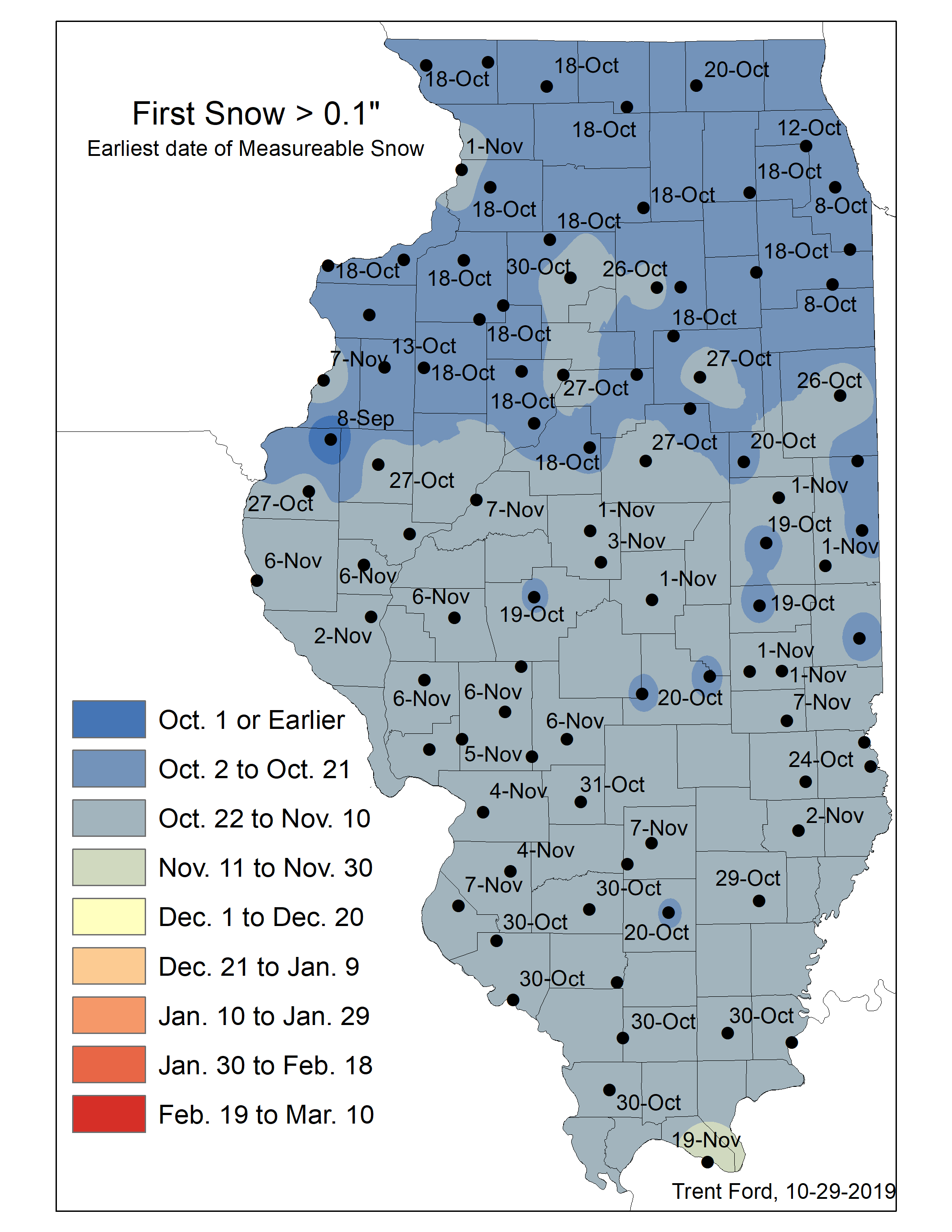The preliminary statewide average August temperature was 73.5 degrees, 0.1 degree above the 1991–2020 average and tied for the 63rd coolest on record going back to 1895. The preliminary statewide average total August precipitation was 4.43 inches, 0.87 inches above the 1991–2020 average and the 29th wettest on record statewide.
Data are provisional and may change slightly over time.
Big August Heat, but Mild Weather Overall
The final month of climatological summer had mild temperatures overall, except for a very intense heat wave in the third week of August. Daily average temperature departures from Normal, IL show most August days were within 7 to 8 degrees of their normals, and more than half of August days were cooler than normal in the twin cities (Figure 1).
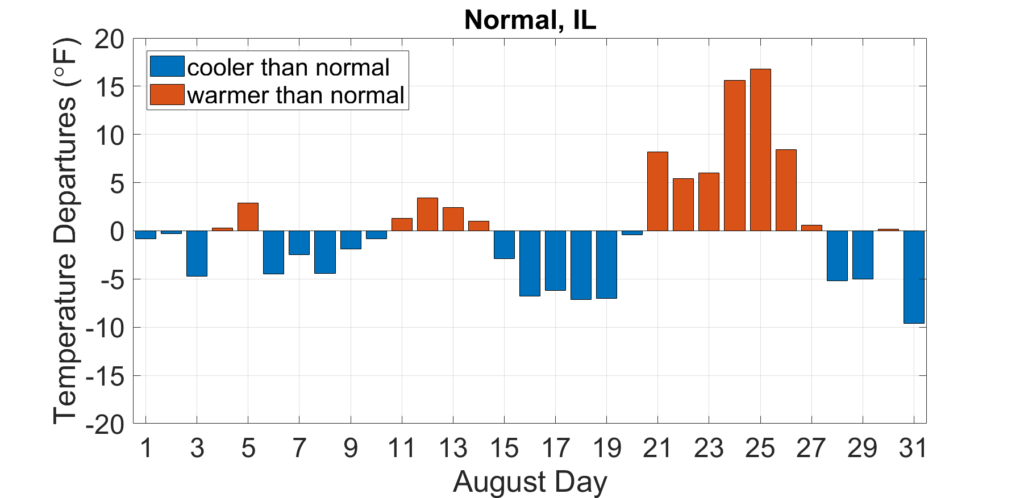
August average temperatures ranged from the low 70s in northern and central Illinois to the high 70s in southern Illinois, within 1 degree of normal statewide (Figure 2). Most parts of the state pushed into the mid- to upper 90s on August 24 and 25, and Chicago’s O’Hare airport recorded 100 degrees on August 24 for the first time in 11 years. The intense heat was followed by a fleeting taste of fall air, and many places saw nighttime temperatures dip into the high 40s, including 48 degrees at Marseilles. The warmest point in the state last month was Cahokia at 77.4 degrees, and the coolest point was Stockton at 69.7 degrees.
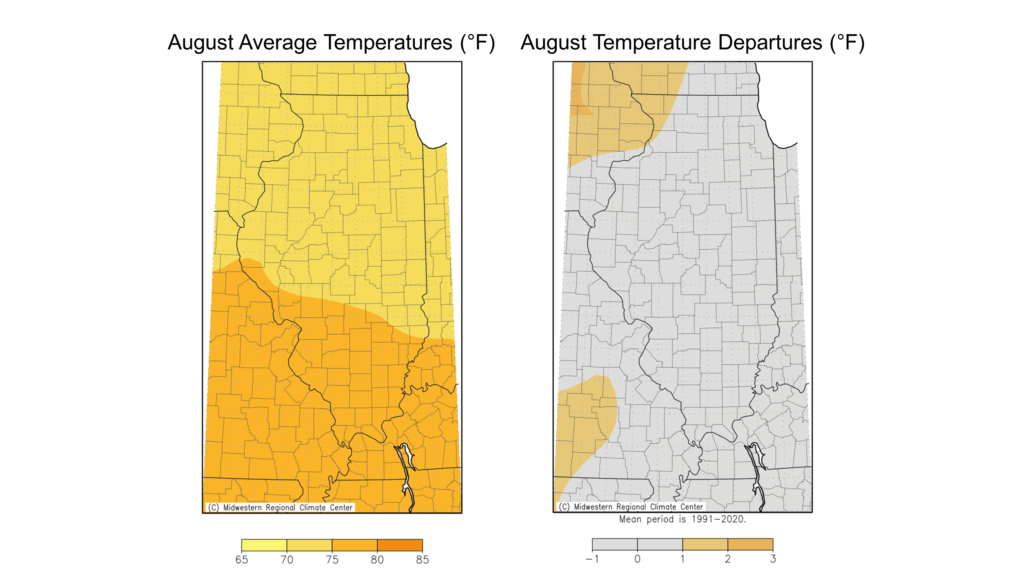
Overall, the preliminary statewide average August temperature was 73.5 degrees, 0.1 degrees above the 1991–2020 average and tied for the 63rd coolest on record going back to 1895.
Late Season Heat Wave
This summer will not go in the books as a particularly extreme season temperature-wise. Most parts of the state have seen near to slightly fewer than normal days with high temperatures exceeding 90 degrees, and early season drought helped nighttime low temperatures regularly drop out of the 70s. However, the largely mild weather was broken up by two intense heat waves, one in late July and the other this past month. A large upper-level ridge established over the central U.S. around August 20, bringing very warm air and high humidity from the southern U.S. and Gulf of Mexico. Daily high temperatures exceeded 95 to 100 degrees across most of the state on August 23 and 24 (Figure 3), and, combined with the humidity, pushed heat index values over 110 degrees statewide. Peoria set a new heat index record at 121 degrees, breaking its previous record from 1995.
The heat caused buckled roads in parts of central Illinois, stressed air conditioning units, and significantly increased energy demand across the Midwest. Both Champaign and Urbana schools were forced to close on August 24 due to malfunctioning HVAC systems and dangerously high temperatures inside some schools.
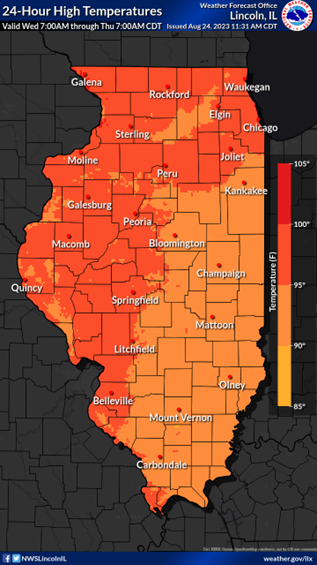
Drought Relief for Some in August
July brought some better rain to parts of drought-stricken Illinois, yet moderate drought remained in more than half the state coming into August. A more active storm track last month helped bring in multiple systems that brought wetter weather to central and southern Illinois in August, helping to continue to relieve earlier drought conditions. Total August rainfall ranged from less than 2 inches in parts of northwest Illinois to over 10 inches in southeast Illinois (Figure 4). Most areas of the state south of Interstate 80 were 1 to 5 inches wetter than normal in August, while much of northern Illinois was 1 to 3 inches drier than normal.
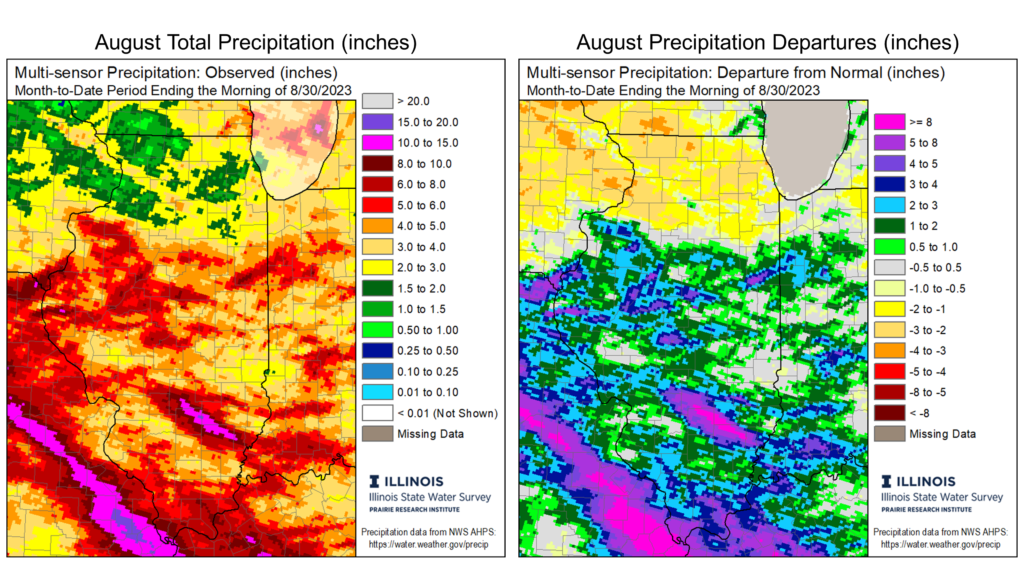
The dryness last month was most intense in northwest Illinois from the Quad Cities to the Wisconsin border. Freeport had its third driest August on record with only 0.80 inches–about 3 inches drier than normal–and the driest last month of summer since 1966. Meanwhile, Fairfield in southeast Illinois had its fourth wettest August on record with 8.11 inches.
Overall, the preliminary statewide average total August precipitation was 4.43 inches, 0.87 inches above the 1991–2020 average and the 29th wettest on record statewide.
Drought in Illinois
It’s safe to say that drought reached a peak in early July, and conditions across much of the state have improved since then. The August 29 U.S. Drought Monitor map has 16 percent of the state in at least moderate drought compared to over 50 percent on August 1 (Figure 5). The wetter weather in August helped improve crop and pasture conditions across the state, stabilize declining streams and pond levels, and promote ecological health in our natural lands. Despite the recovery, drought likely and significantly impacted crop yield potential this year, and its impact on tree health–especially in urban areas–will not be well known until next year. However, rain in July and August helped keep 2023 out of the same breath as the most severe drought years like 2012 and 1988. One exception to the wider drought improvement is in northwest Illinois, where drought conditions expanded in August. Crop impacts have been reported in this part of the state through August, and soils remain somewhat to very dry from the Quad Cities up to Rockford.
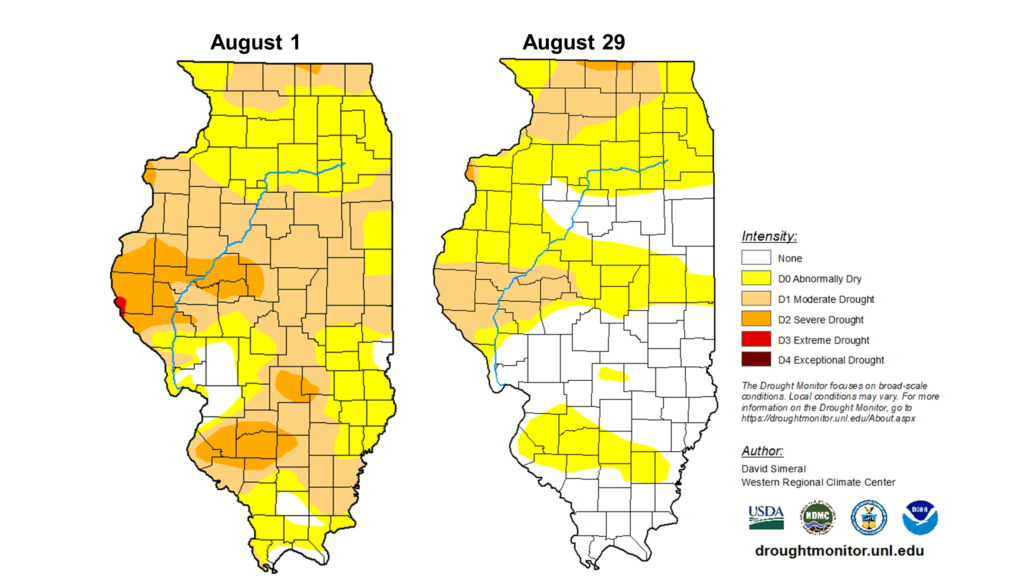
While drought has largely improved in Illinois, its impact to flow on the Midwest’s largest rivers remains. Dry conditions in the Upper Mississippi and Ohio Basins have led to concerns of low flow and navigation and ecology impacts along the Mississippi River. Forecasts indicate the Mississippi River at Memphis is likely to reach low stage in early September (Figure 6). Dry soils across the larger Midwest region will likely slow river stage recovery from any additional rain in early fall. Therefore, without a significant shift to wetter conditions and/or an errant tropical system moving into the region, low flow issues on the Ohio and Mississippi Rivers are likely to continue or intensify into September.
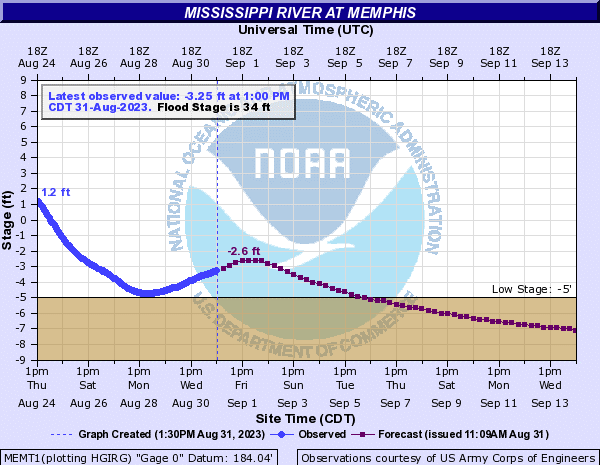
Summer in Illinois
Climatological summer encompasses June, July, and August, and the season often brings more than its fair share of intense weather. This past season was on the mild side, temperature-wise, and was somewhat to much drier than normal. The abundance of gray in the maps in Figure 7 indicates average temperatures in all three summer months were mostly within 1 degree of normal across the state. While the Midwest was exposed to ephemeral heat in July and August, persistent extreme high temperatures stayed well south, making for one of the hottest summers on record in parts of Texas and New Mexico.
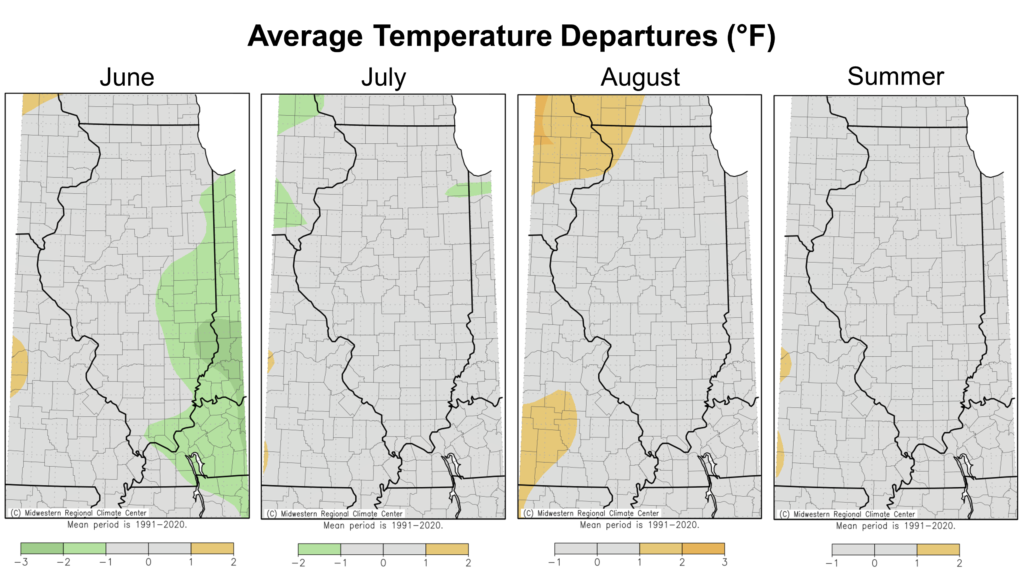
The summer season began with a very dry June that kicked off drought concerns across the state. Wetter conditions in July and August helped reduce or eliminate drought in central and southern Illinois, but parts of northern Illinois remained dry in the latter part of the season. Summer precipitation totals ranged from 6 inches in parts of northwest Illinois to over 20 inches in parts of southeast Illinois. Most of the northwest part of the state was 4 to 8 inches drier than normal in summer, while much of southern Illinois was 2 to 10 inches wetter than normal (Figure 8).
This past season was the 13th driest summer on record in Moline with 6.89 inches, and the driest since 2012. It was also the 20th driest summer on record in Rockford with 7.63 inches, which is less than half of the summer total from last year. Three of the past four years have seen top 20 driest summers in Rockford. In contrast, this summer was one of the wettest in far southern Illinois, and it was the fifth wettest on record in Paducah, Kentucky with 18.90 inches.
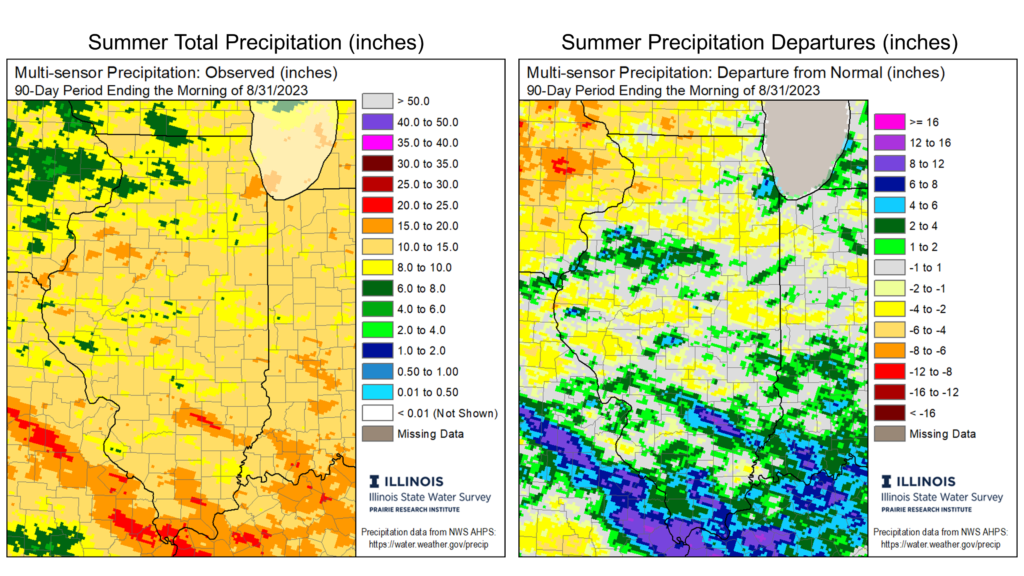
Overall, the preliminary statewide average summer temperature was 73.4 degrees, 0.4 degrees below the 1991–2020 average and tied for the 57th coolest on record going back to 1895. The preliminary statewide average total summer precipitation was 11.51 inches, 0.76 inches below the 1991–2020 average and the 69th driest on record statewide.
Outlooks
September brings in what is undoubtedly the best season in Illinois. However, outlooks for the month of September suggest we may need to wait a bit for more consistent fall weather, with higher odds of warmer and drier than normal weather for the first month of the season (Figure 9a). Meanwhile, guidance for climatological fall is less than confident, with equal chances of warmer, cooler, wetter, and drier than normal weather.
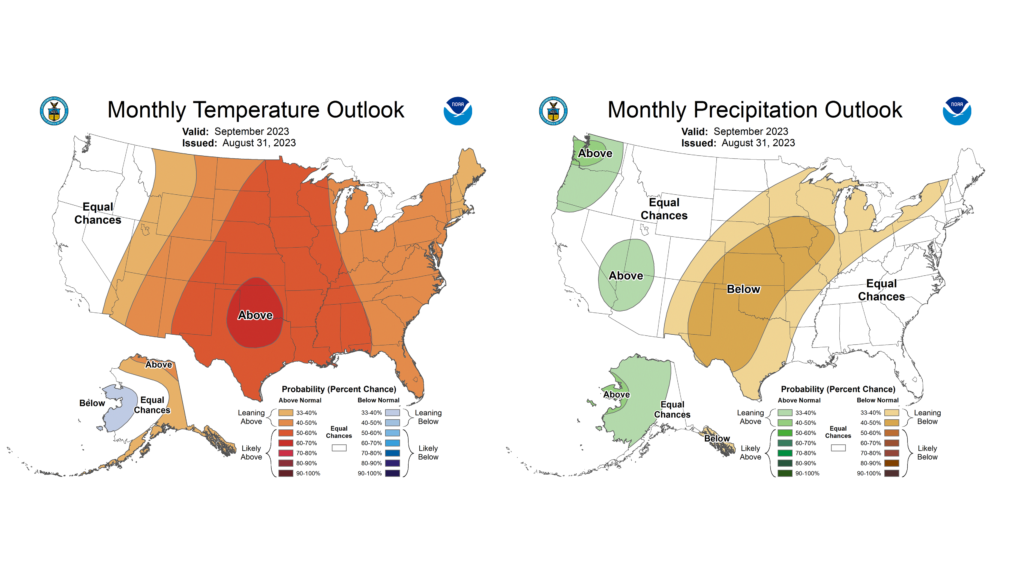
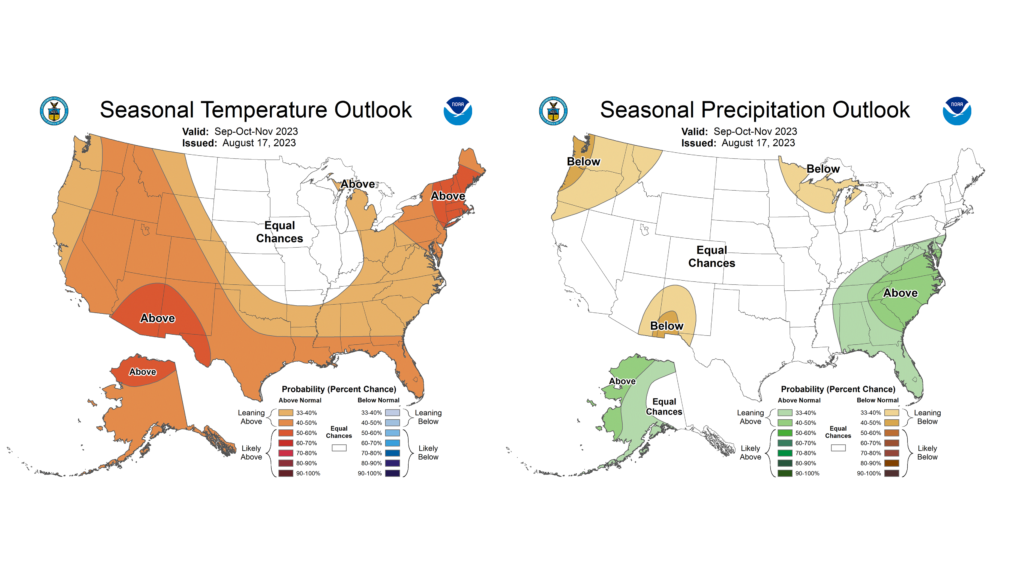


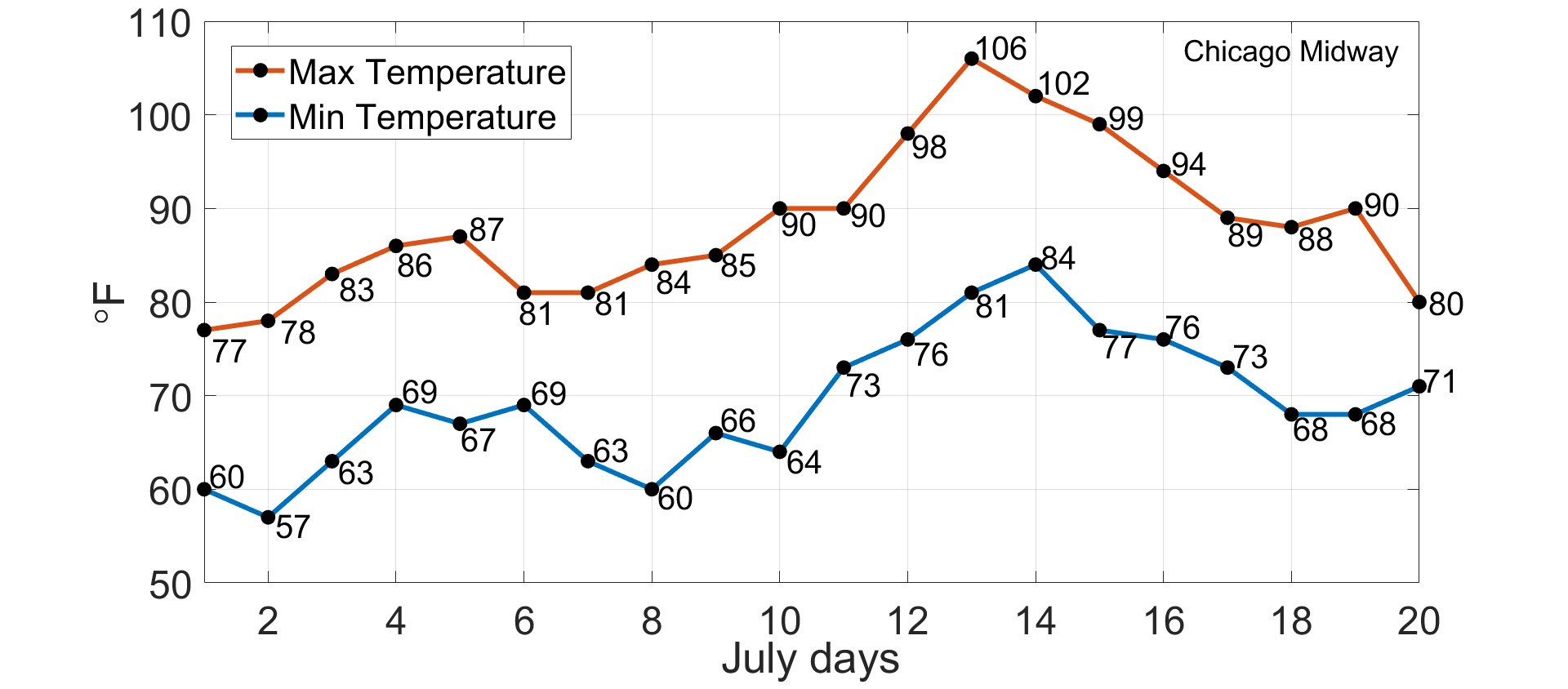
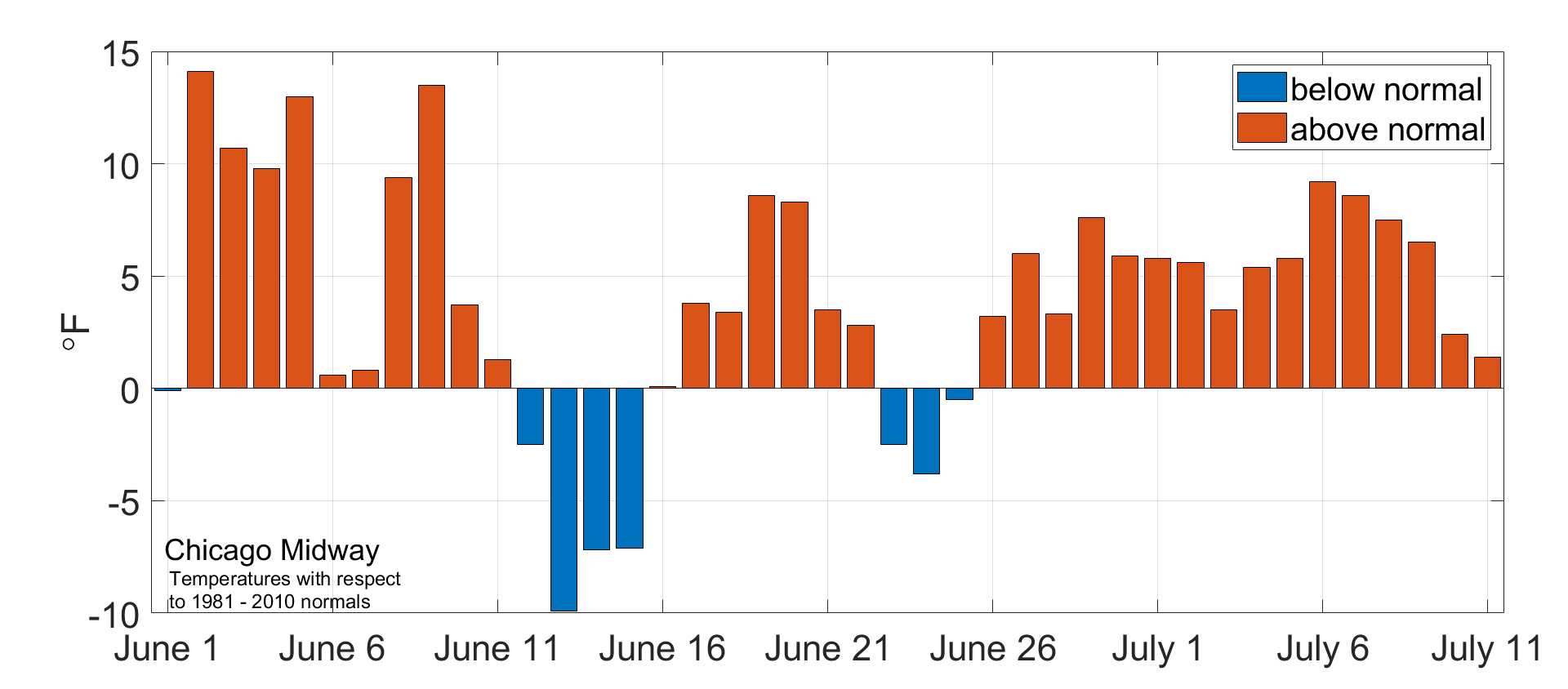
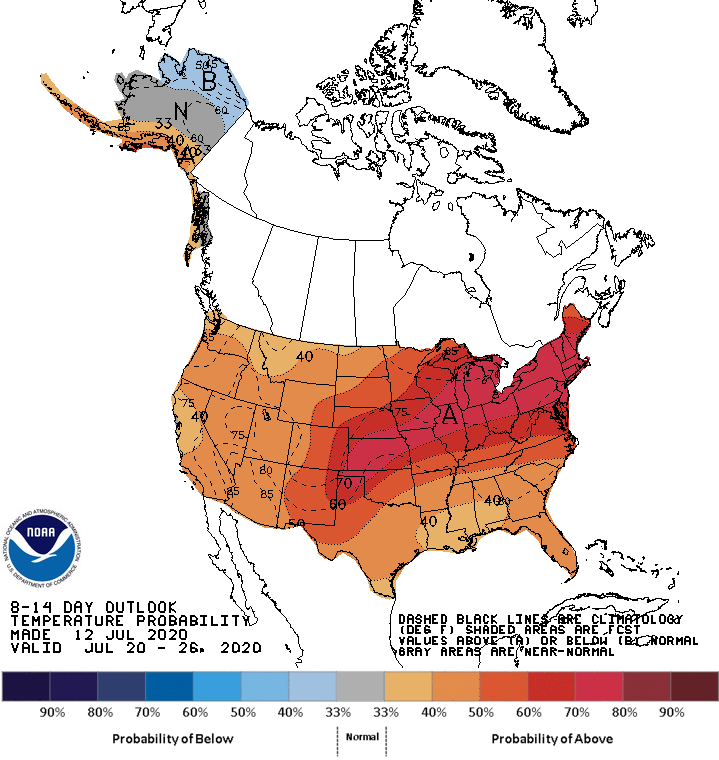

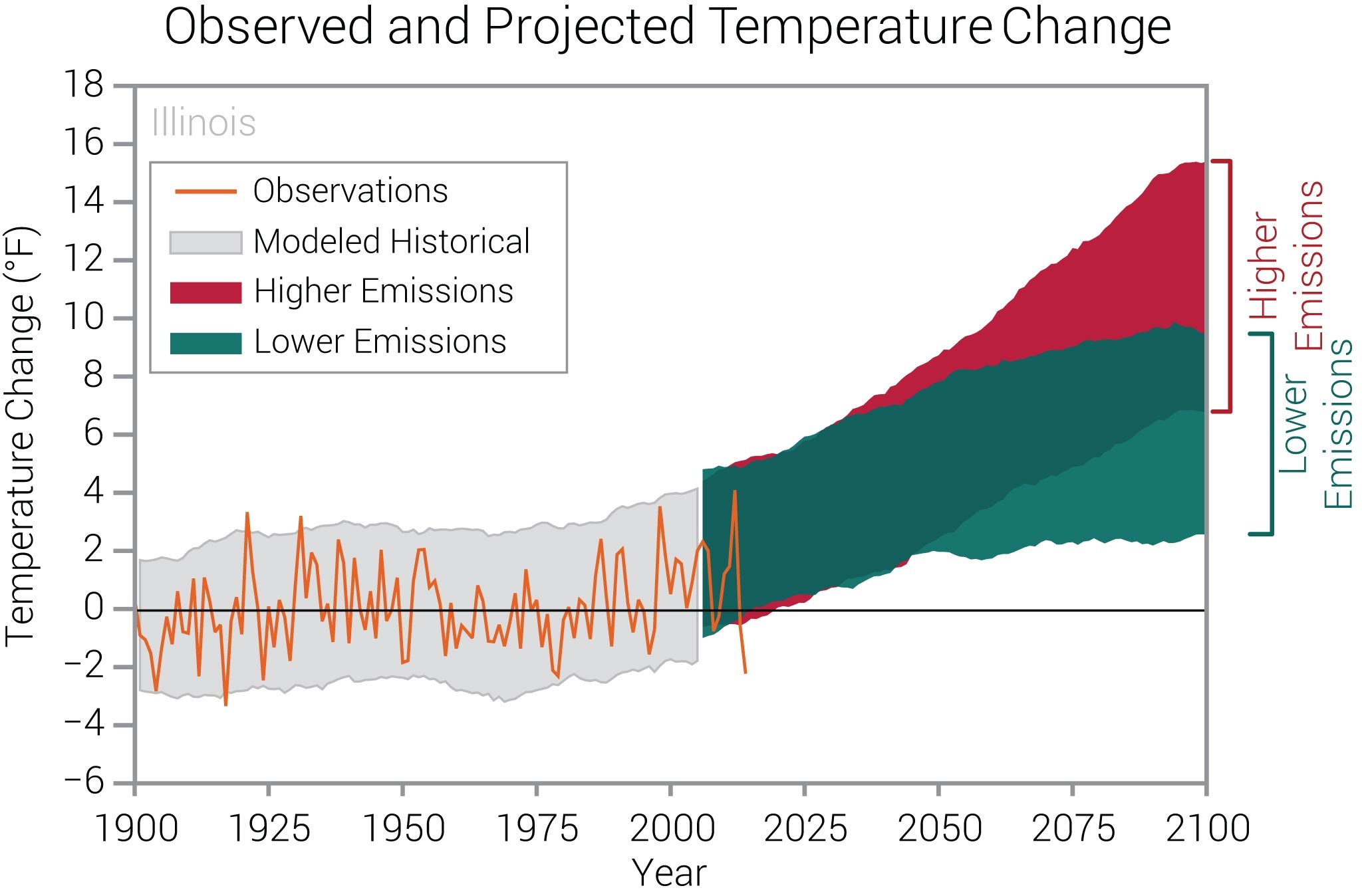

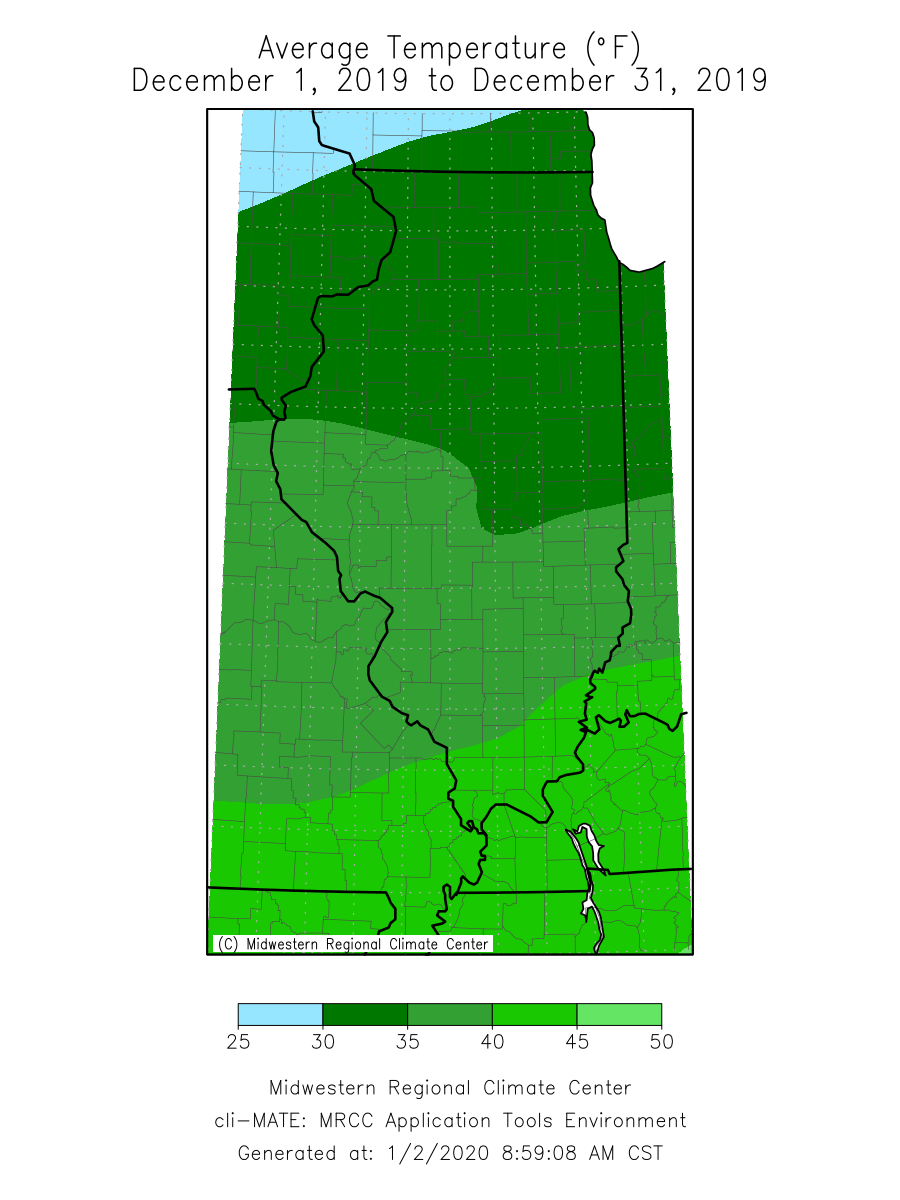
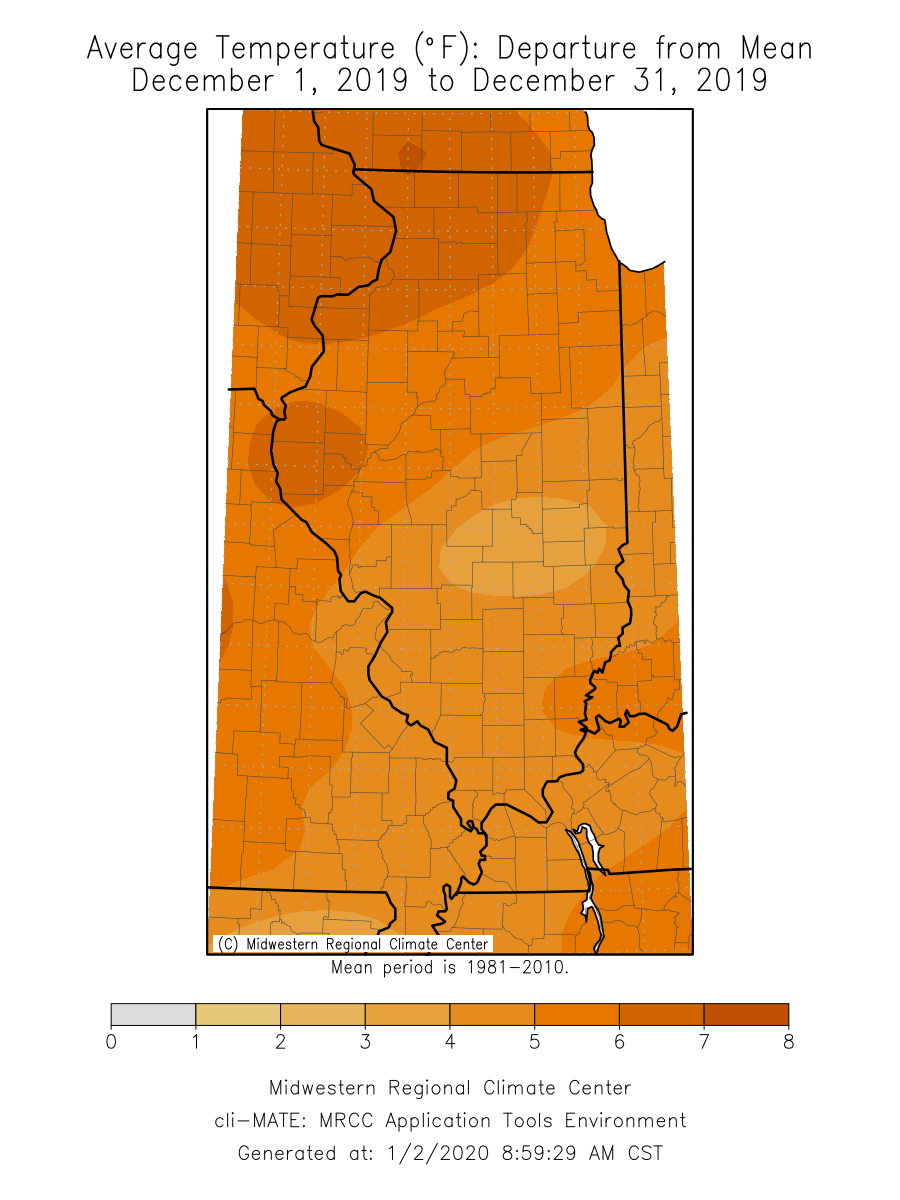
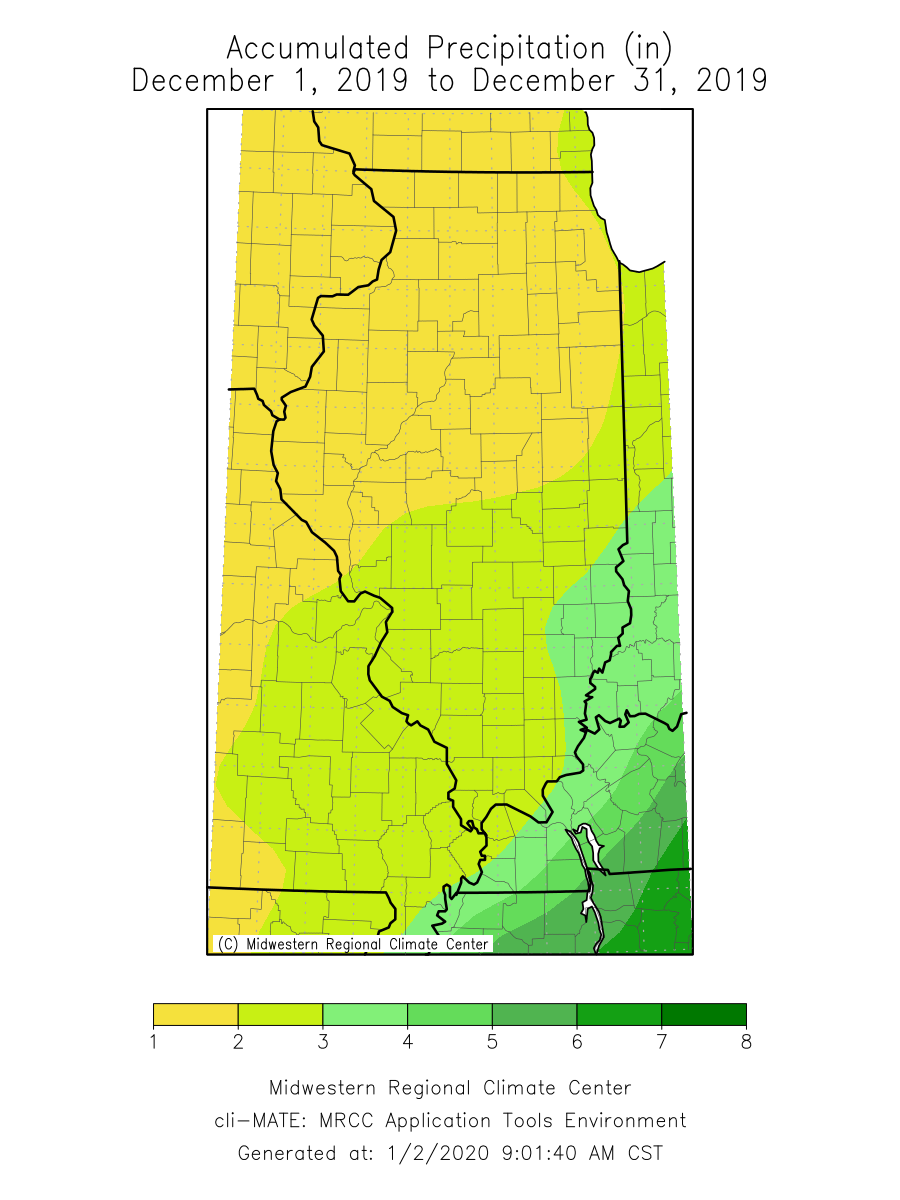
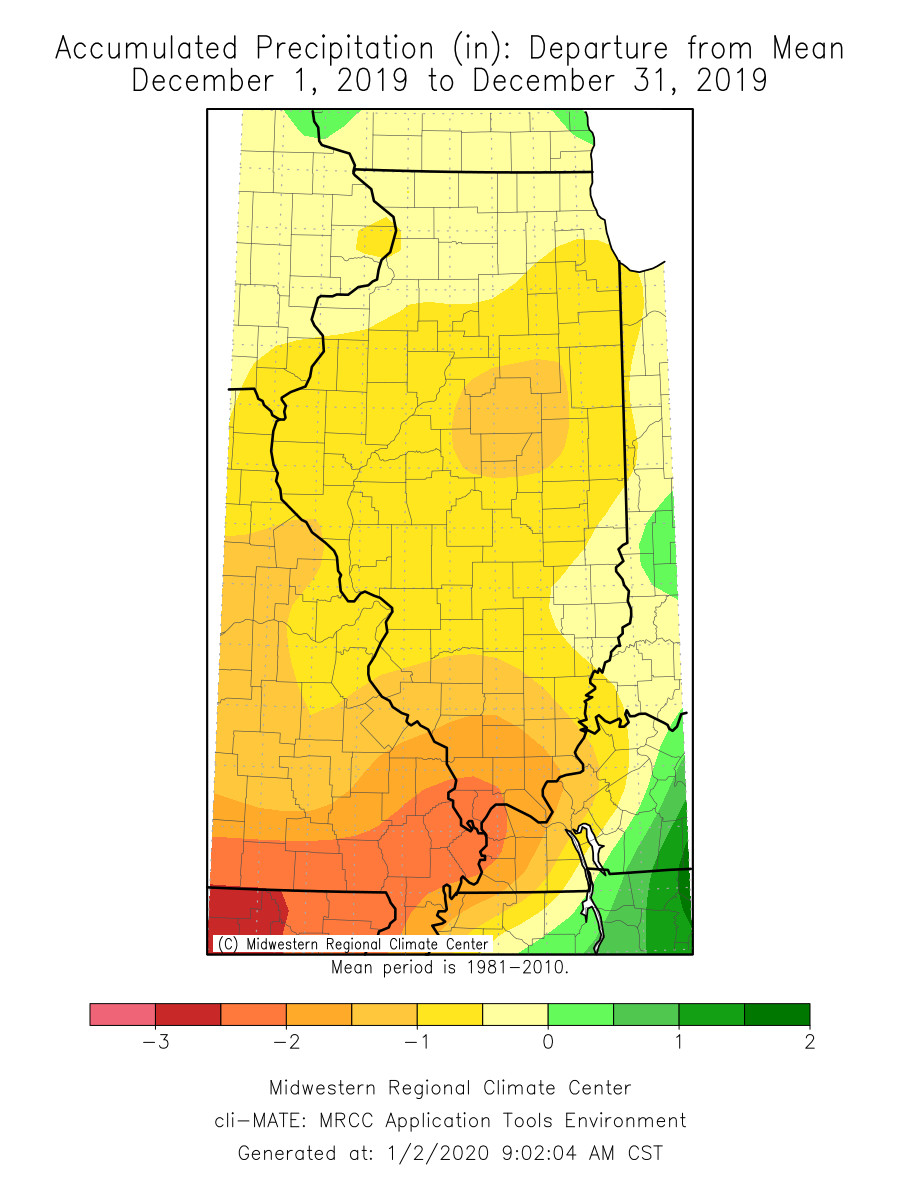
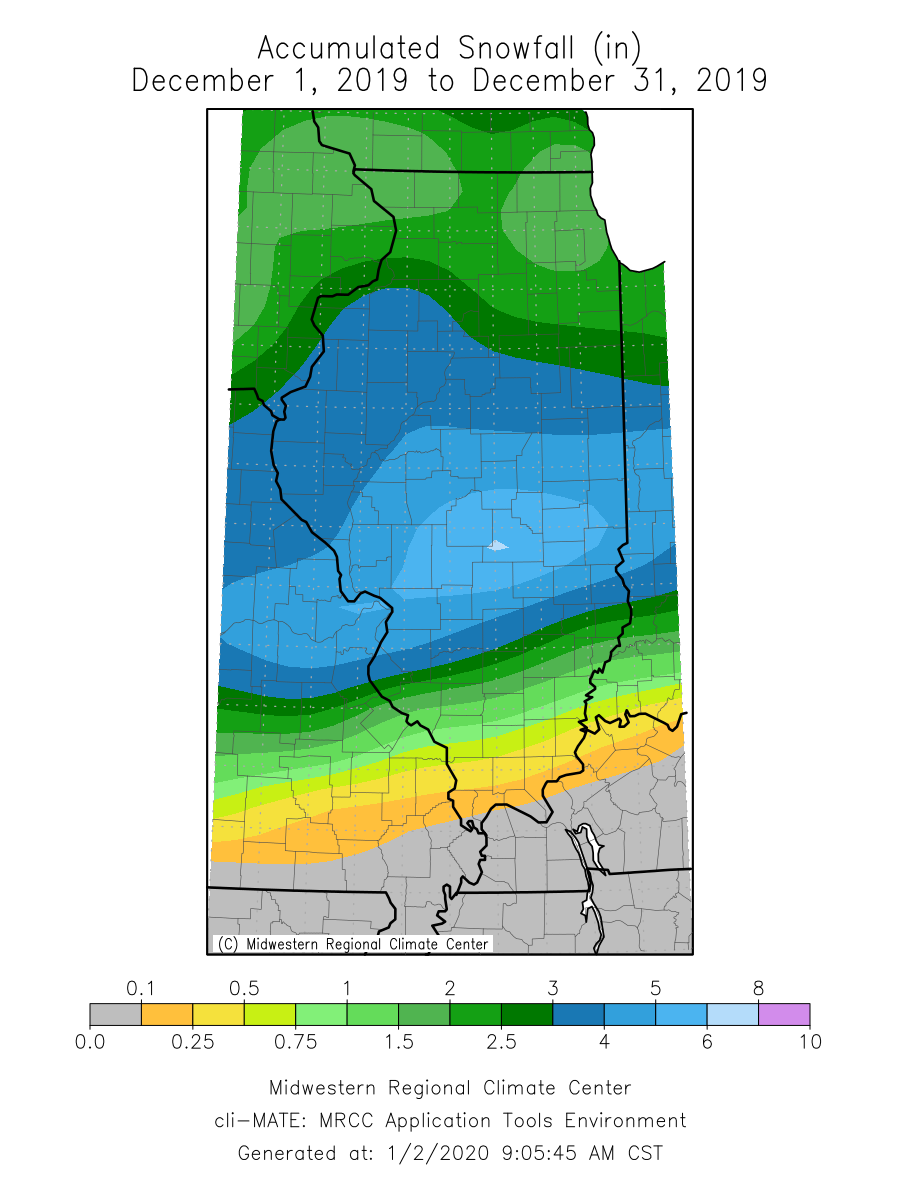
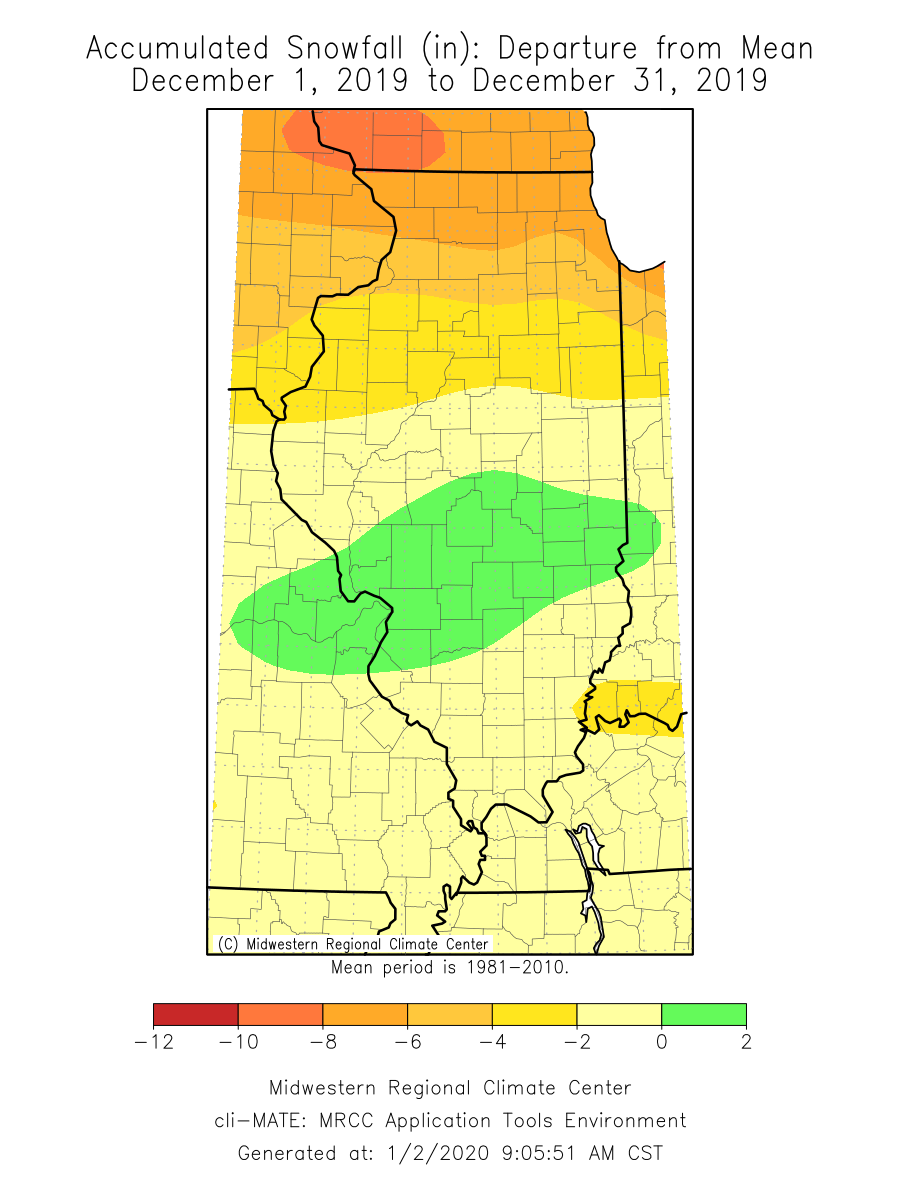
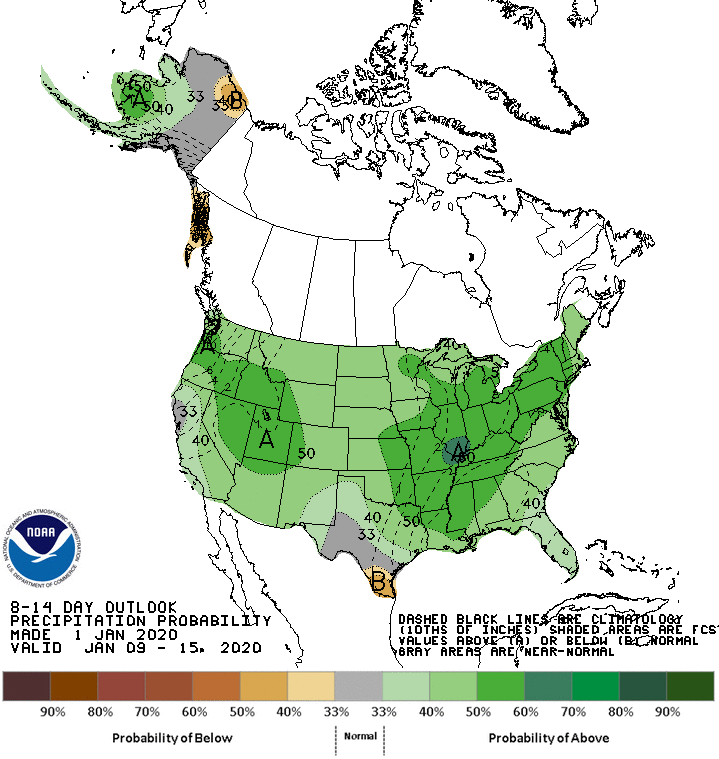
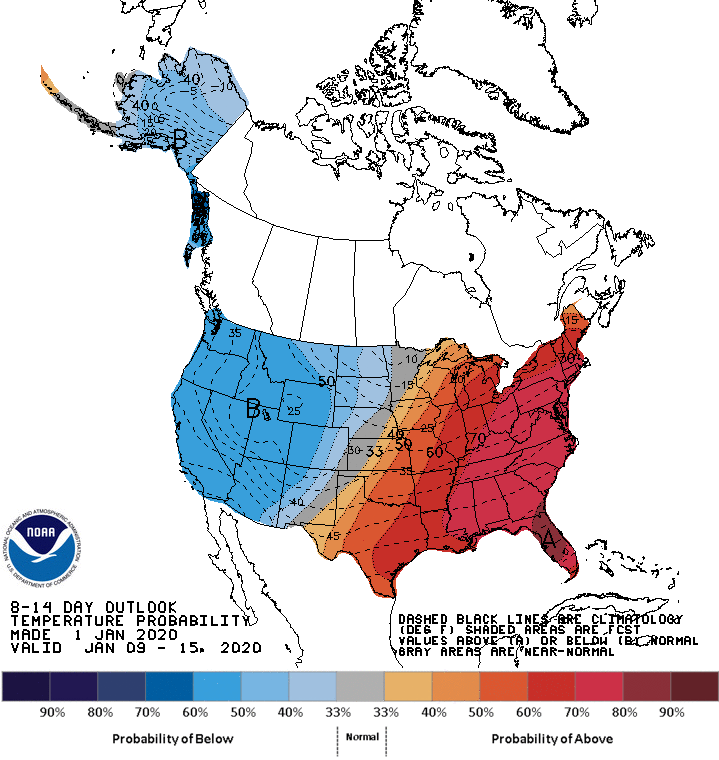


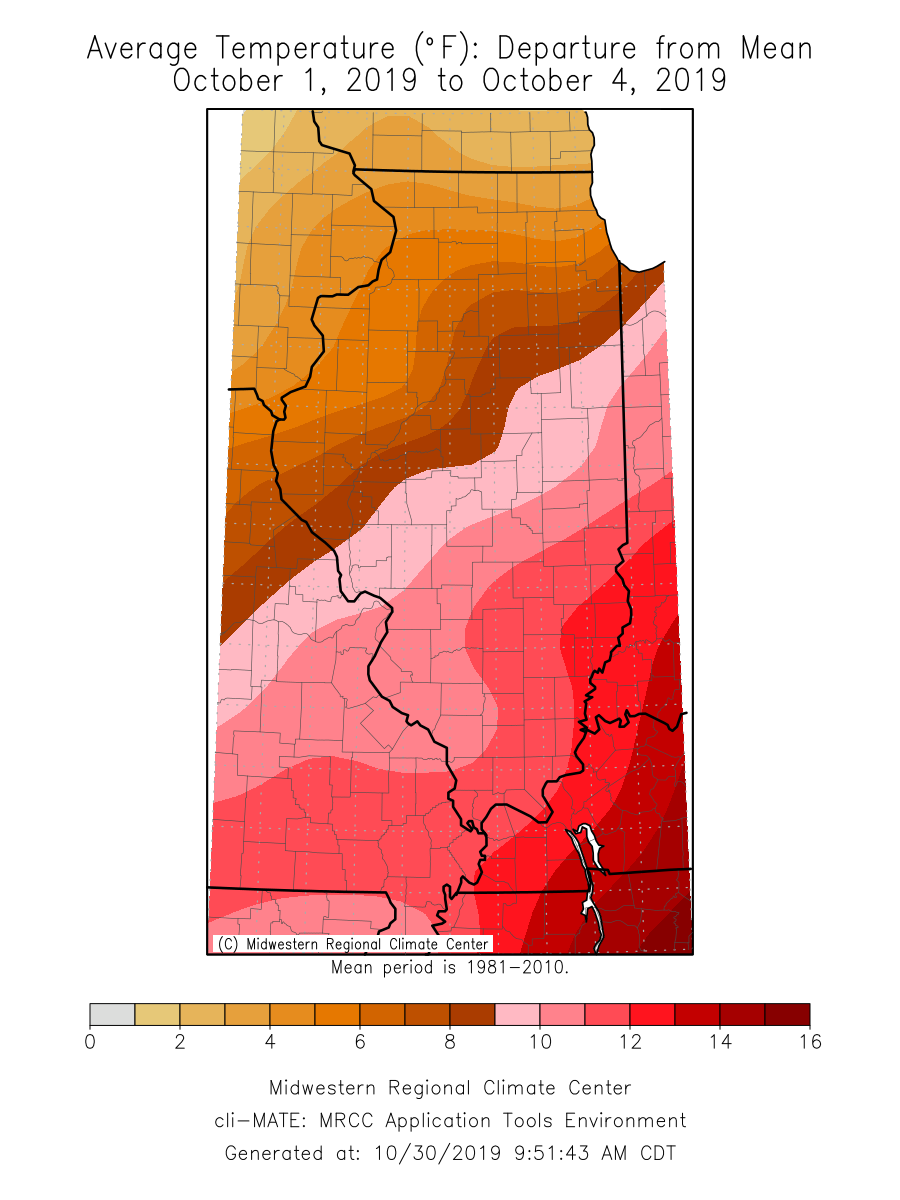
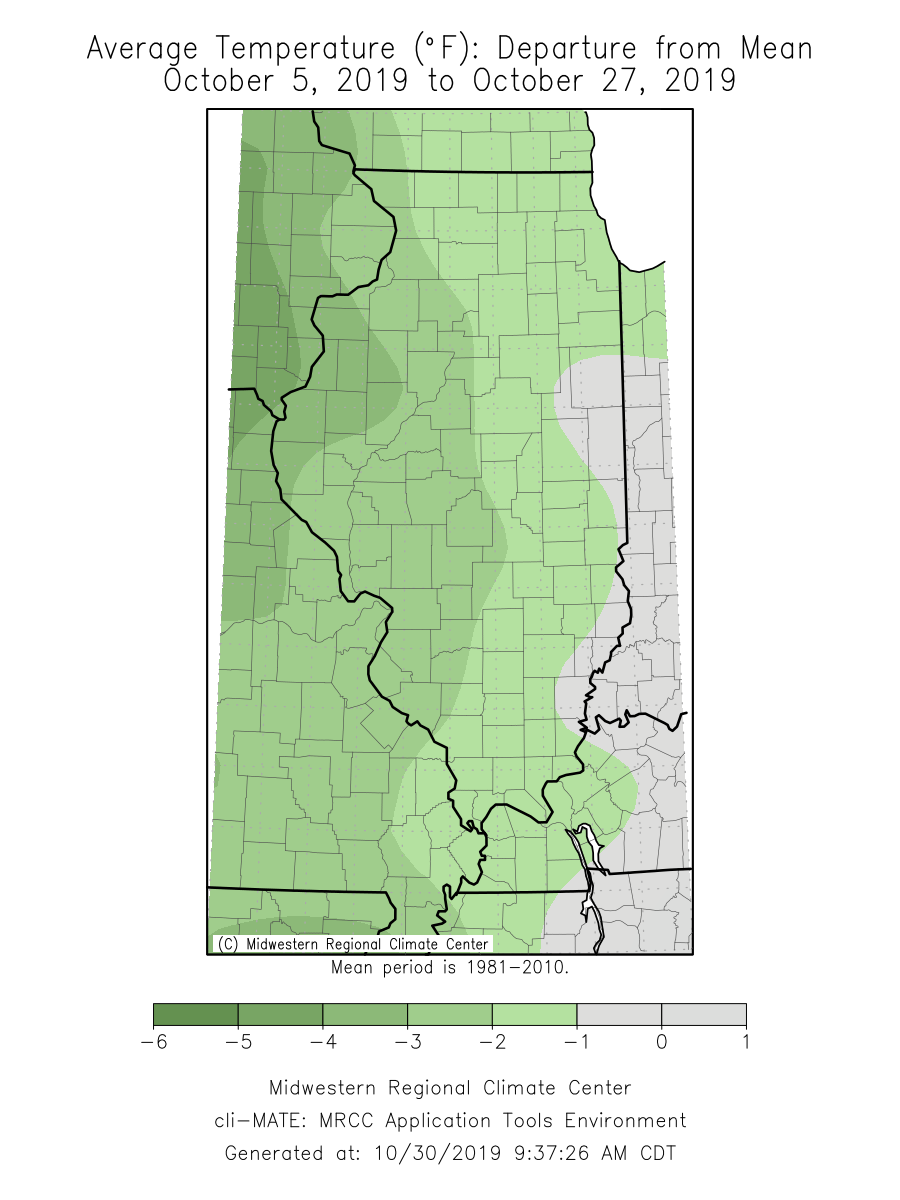
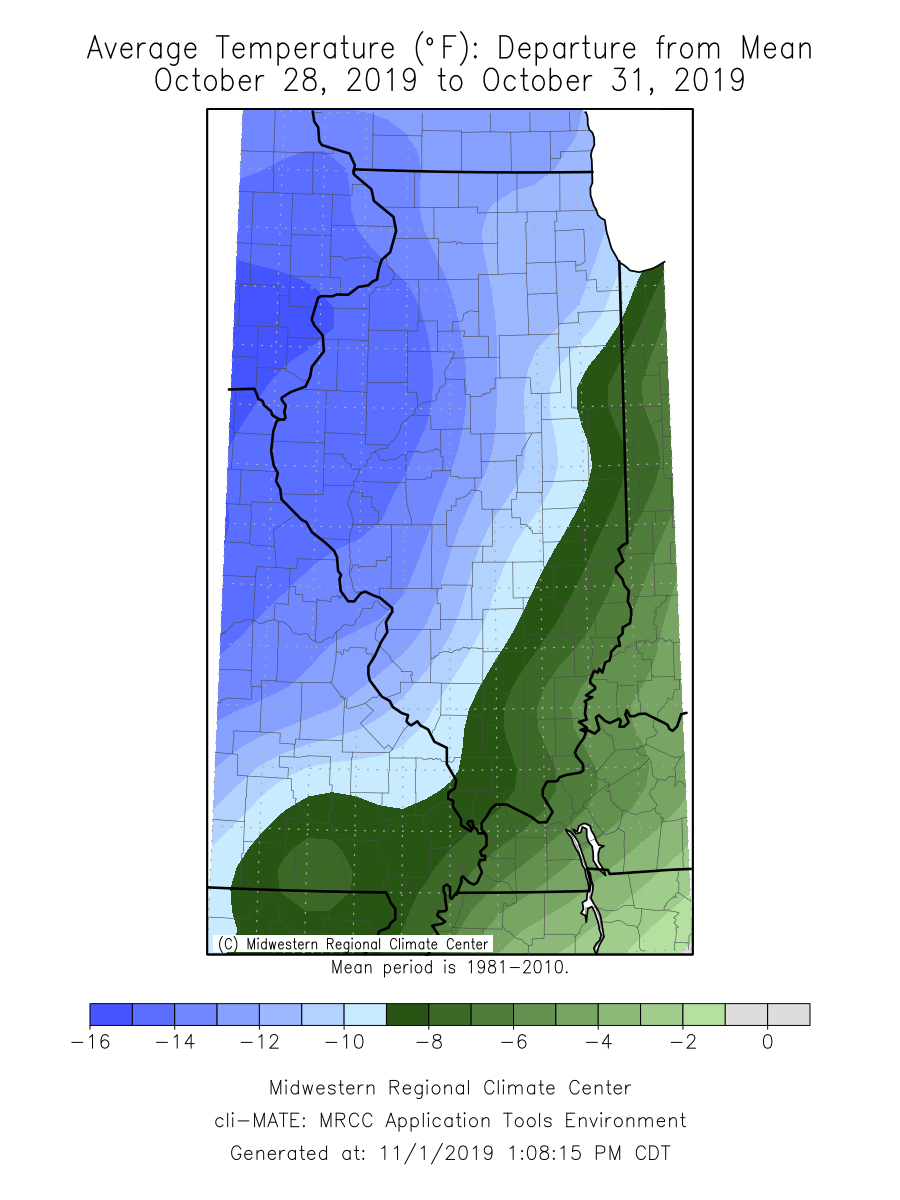
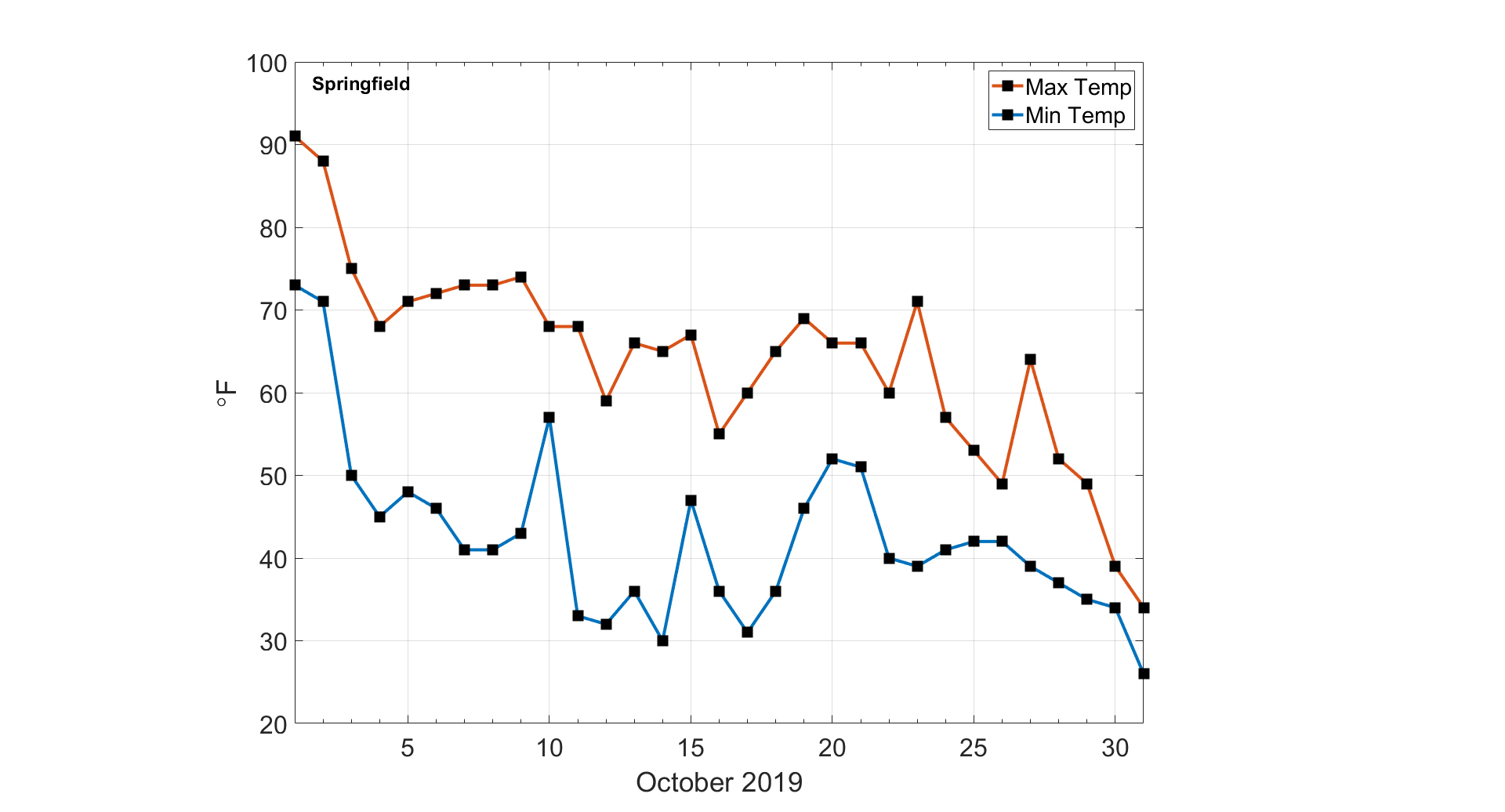
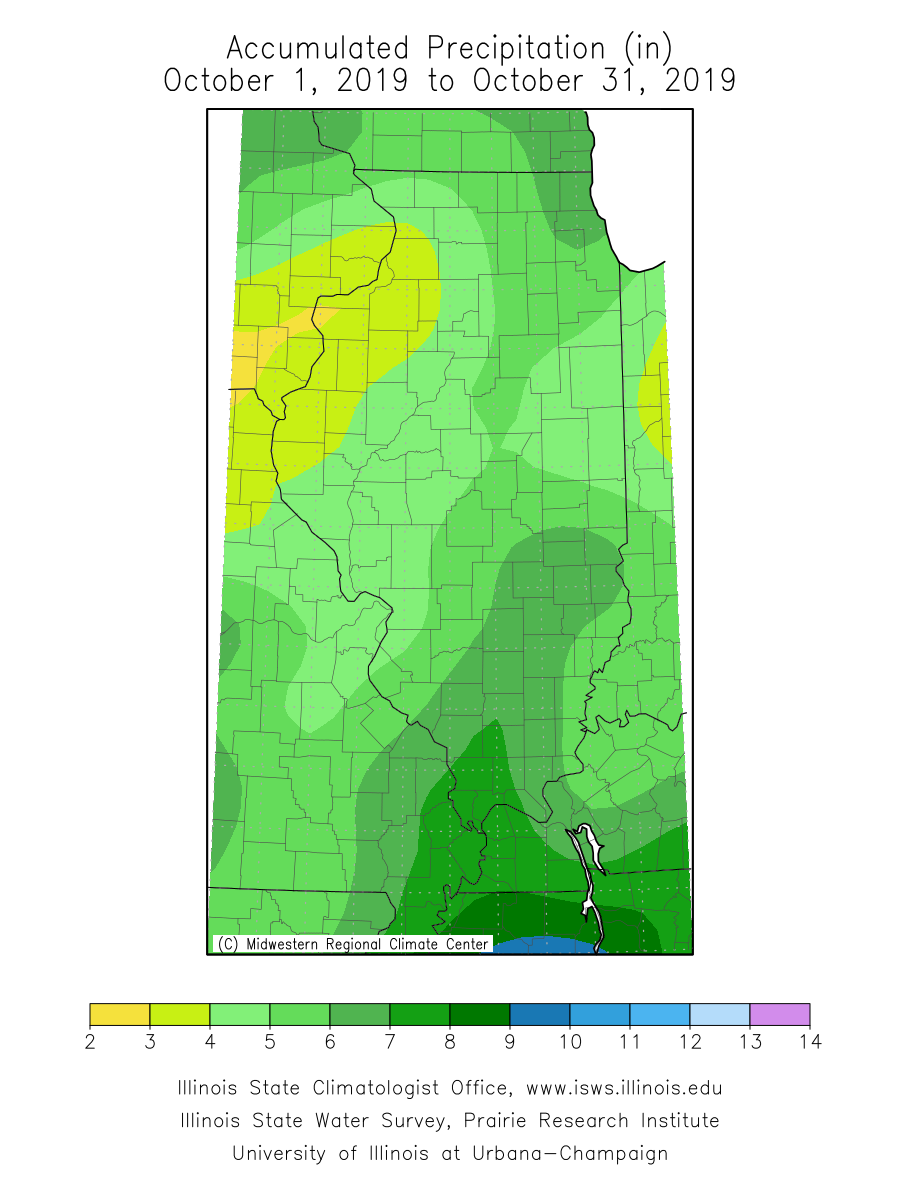
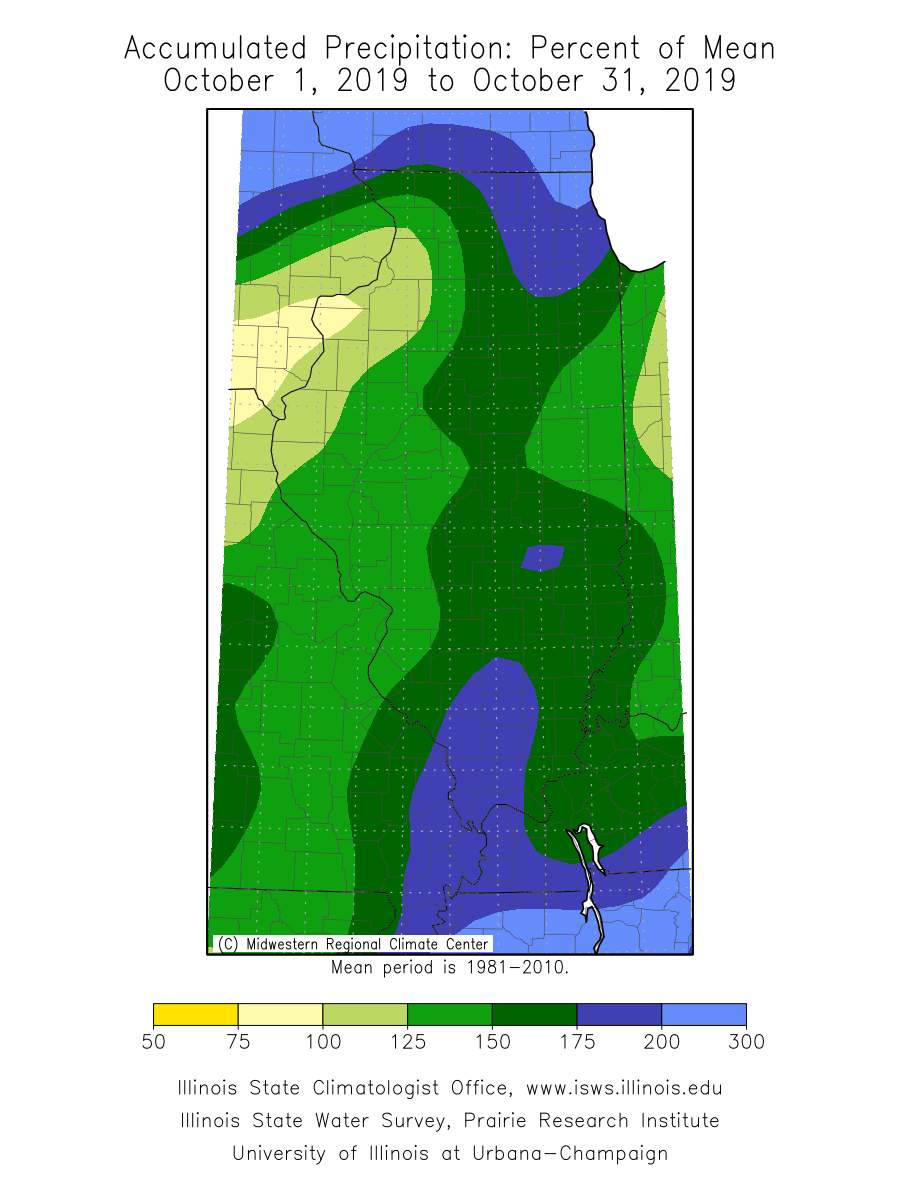 The cool down that came at the end of this month brought a variety of precipitation, including snowfall and some snow accumulation in northern and western Illinois. Total snowfall accumulation over the last week of October ranged from over 8 inches in northwestern Illinois to just over a tenth of an inch as far south as Nokomis in Montgomery County. The highest October snowfall total, 8.5 inches, was in Orangeville in Stephenson County. Although late October is early for the first snowfall in Illinois, it is certainly precedented. The map below shows the date of the earliest recorded snowfall (> 0.1 inch) at COOP stations across the state.
The cool down that came at the end of this month brought a variety of precipitation, including snowfall and some snow accumulation in northern and western Illinois. Total snowfall accumulation over the last week of October ranged from over 8 inches in northwestern Illinois to just over a tenth of an inch as far south as Nokomis in Montgomery County. The highest October snowfall total, 8.5 inches, was in Orangeville in Stephenson County. Although late October is early for the first snowfall in Illinois, it is certainly precedented. The map below shows the date of the earliest recorded snowfall (> 0.1 inch) at COOP stations across the state.